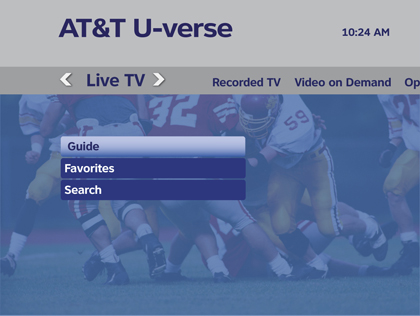
AT&T’s John Stankey presented to investors earlier this week – among the things he talked about are upgrades coming this year to the U-verse IPTV service. New features seem to roughly track with what Dave reported last June. Whole-home DVR is scheduled for the second half of 2008, though Stankey mentioned “mid-year” so the guess is it’ll roll out in Q3. Looks like additional streams are coming too – two HD and two SD. And apparently AT&T will be introducing pair bonding before the end of the year. Pair bonding should extend the reach of the operator’s DSL network and increase speeds for households within the 3,000-foot range of AT&T’s copper loop.
Feh, any mention of cleaning up their HD streams to clean up their awful compression? U-Verse got the macroblockies bad.
macroblockies <- – – ??? Could not find in Webster’s-Meridian. Please define.
Macroblocking. Frames in MPEG-2 and AVC are encoded using macroblocks, or little rectangular blocks of pixels (well, the luma and chroma are separate, but lets just go with it). 16×16 in MPEG-2. Can’t remember what it is in AVC. Anyway, a little square block of pixels.
In MPEG-2 if the encoding is running out of room, say during a waterfall scene, or a scene of a fireplace, or rain, or reflections in water, or a pan, then you’ll see “macroblocking”. Basically it means you’ll become aware of the blocks in the picture because they’ll suddenly have distinct edges, and be visible.
Means that they ran out of room for the higher frequency coefficients normally used to encode the frame and only had the lower frequency components left, so you see big squares. Like maybe that red background doesn’t look continuous but rather like a bunch of red squares.
In AVC they have additional tricks to try and keep this from happening, so things tend to just get “softer” (fuzzier) first, rather than blocky, but it can still happen.
Means that there is too much going on. Presumably it wouldn’t happen if the bit rate were higher.